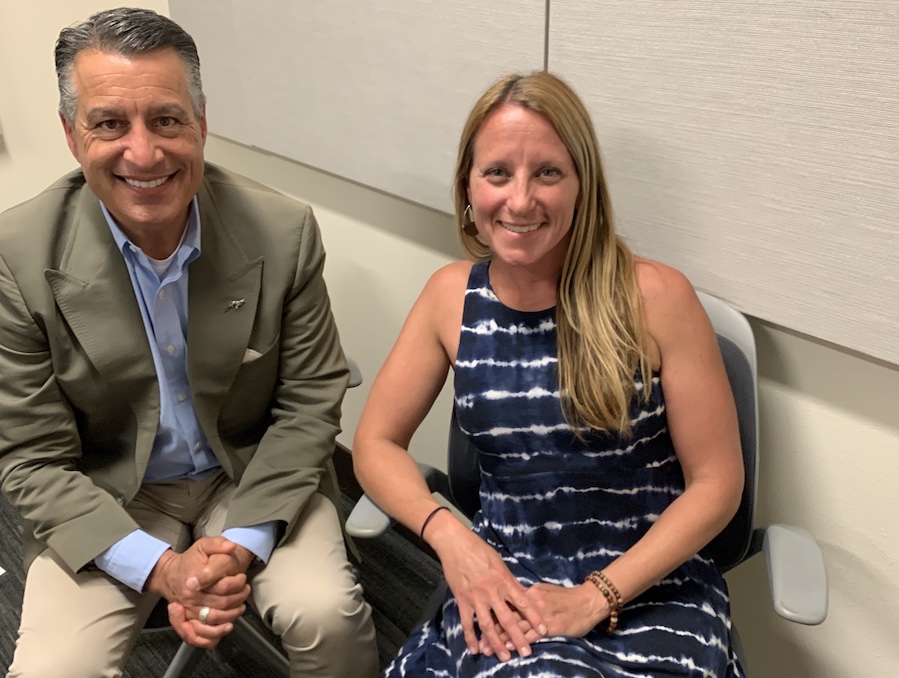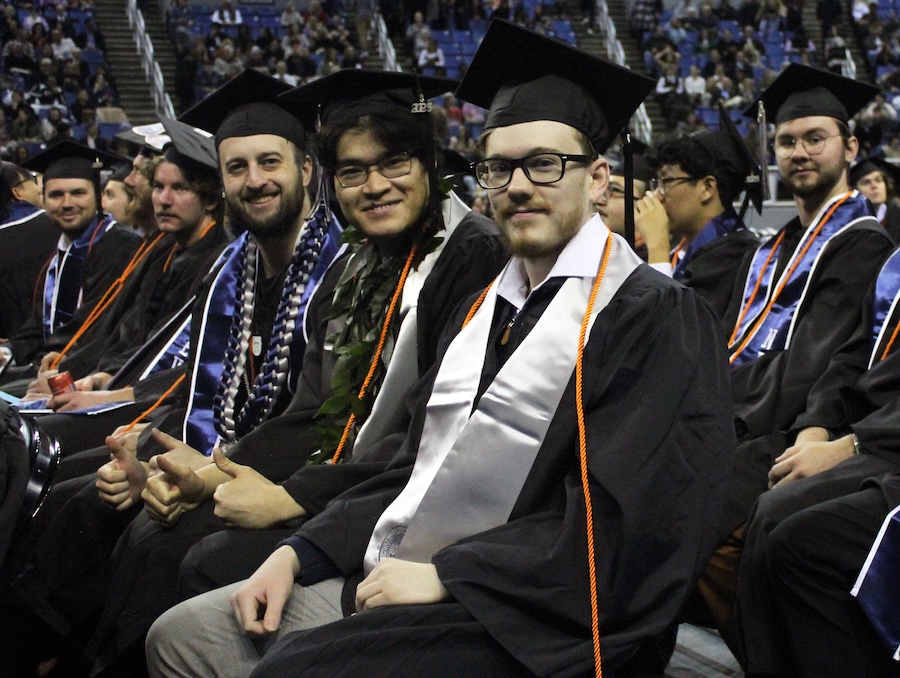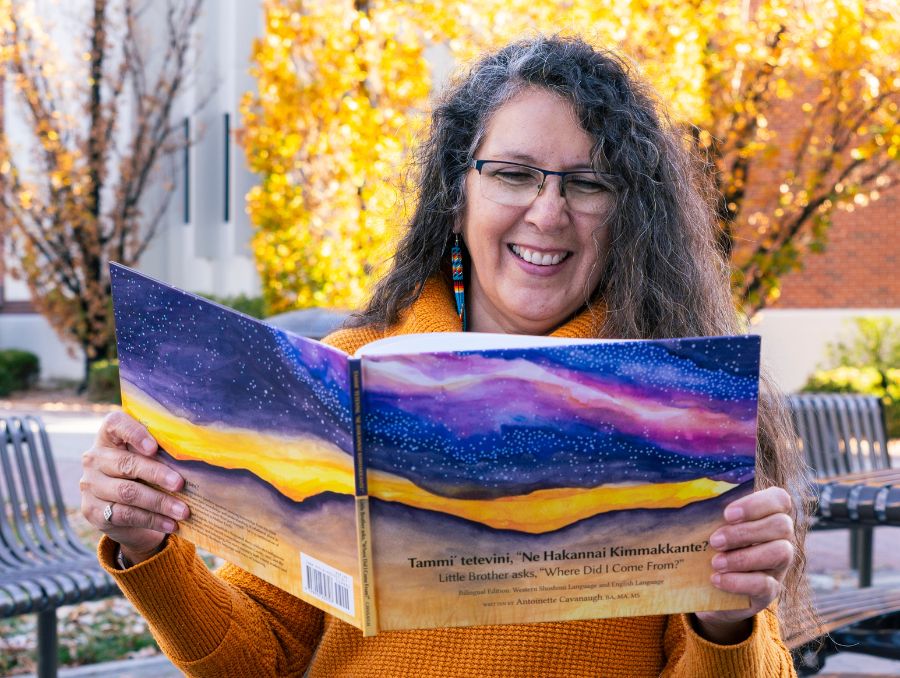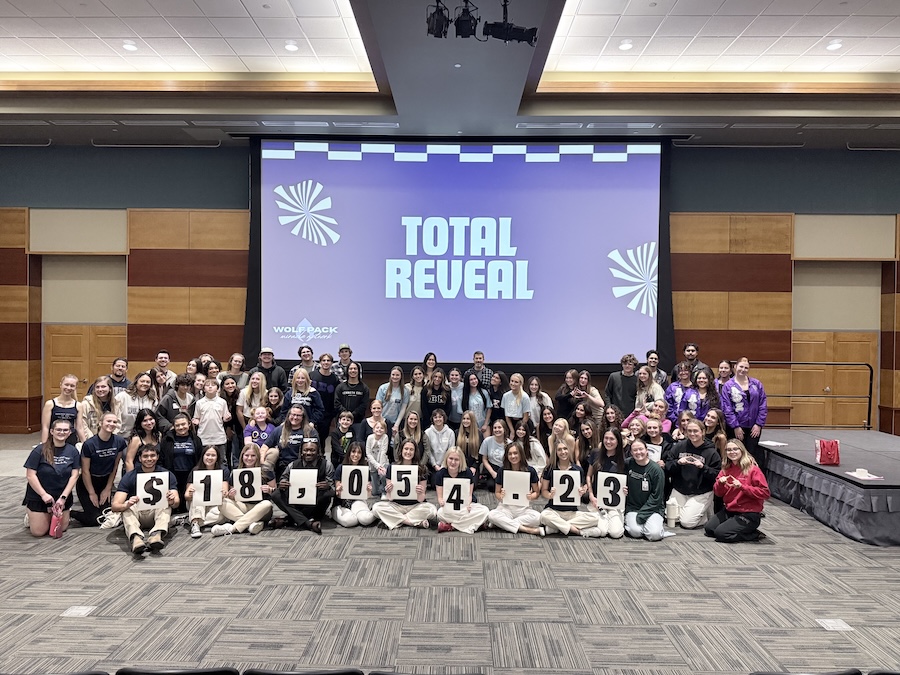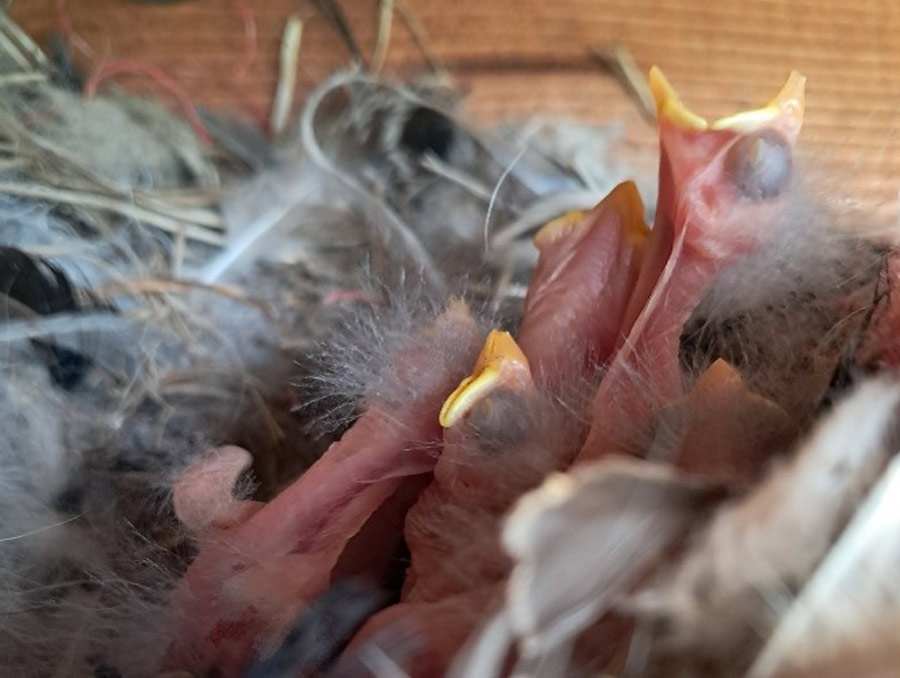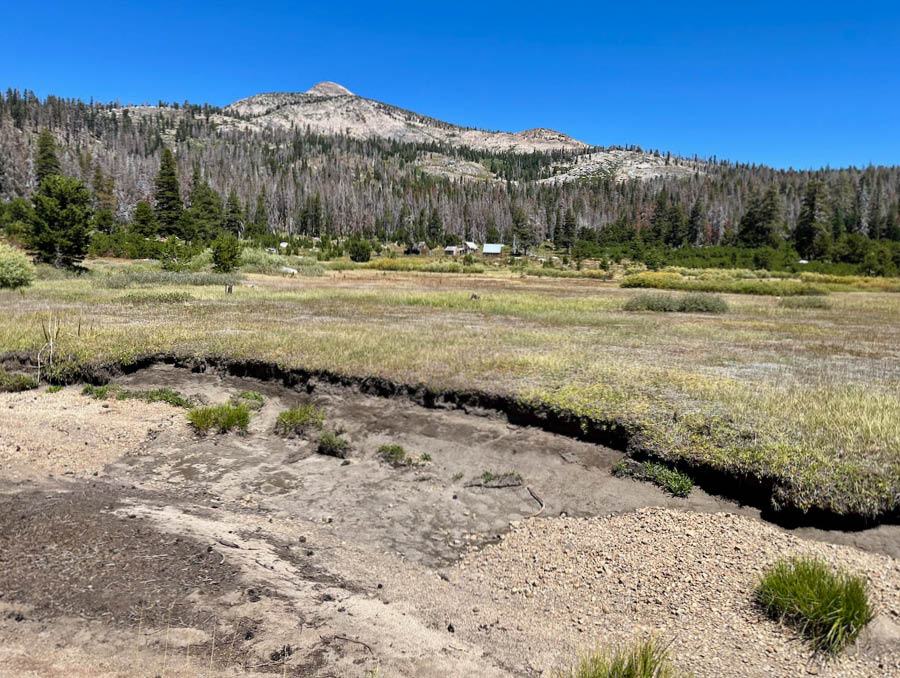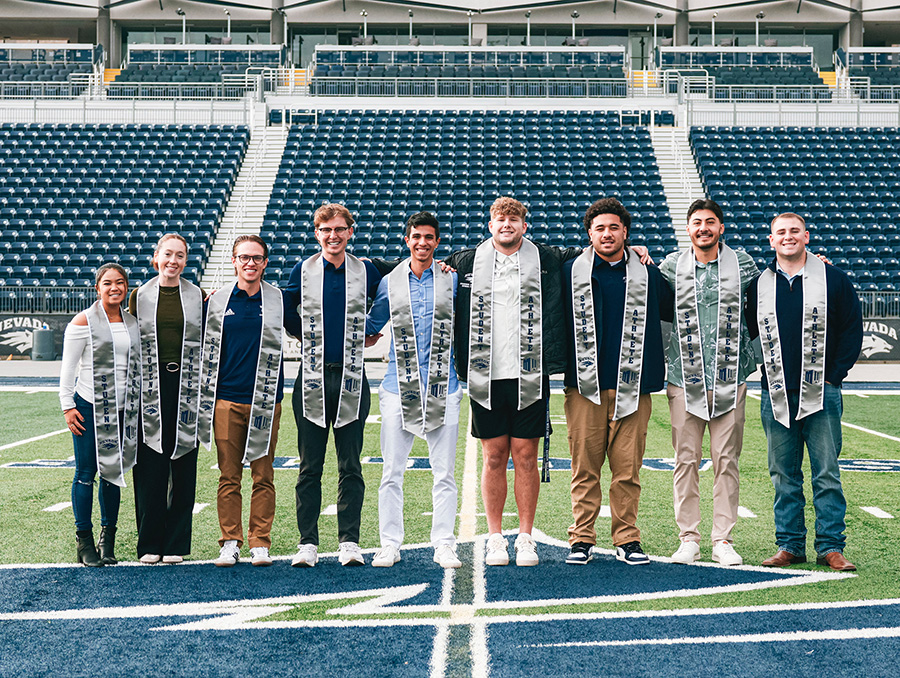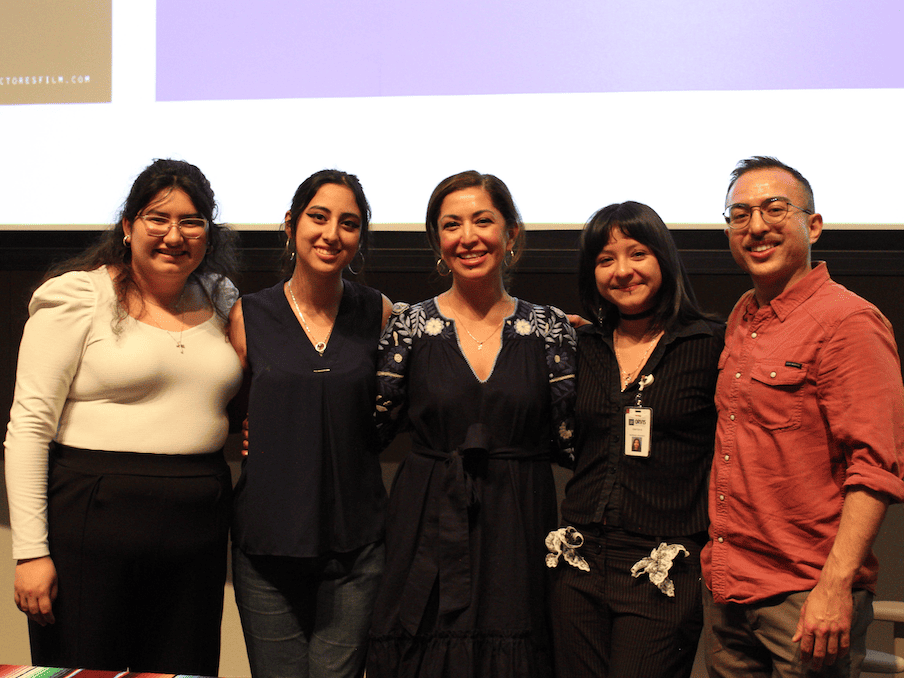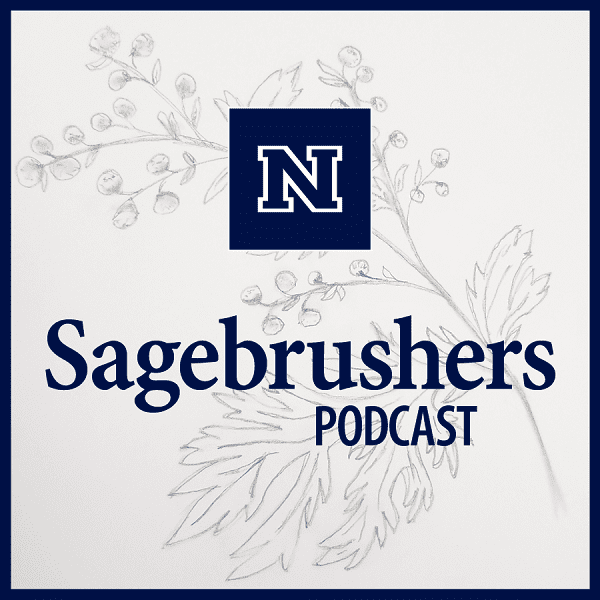
Tune into Sagebrushers season 2 episode 11 for a conversation between University of Nevada, Reno President Brian Sandoval and Dr. Sarah Bisbing, director of the Whittell Forest and Wildlife Area and an associate professor of forest ecosystem science in the College of Agriculture, Biotechnology and Natural Resources. The Whittell Forest is a 2,650-acre property owned by the University that serves as a living laboratory of forested mountain land in a primitive state for research and instruction.
During the episode, Sandoval and Bisbing explore Bisbing’s journey to the University, her research related to forest persistence potential (ensuring that there are forests in the future), and her role as director of the University’s forest. They also discuss what the biggest threats facing forests are, what it means to work in a living laboratory and what makes the Whittell Forest unique. In addition, Bisbing shares some of the recent community partnerships her team has worked on and their efforts to recruit and train the next generation of foresters.
Sagebrushers is available on Spotify, Apple Podcasts and other major podcast platforms, with new episodes every month.
Sagebrushers – S2 Ep. 11 – Sarah Bisbing
Join host President Brian Sandoval as he and Dr. Sarah Bisbing, director of the Whittell Forest and Wildlife Area and associate professor, discuss her research related to forest persistence potential, her role as director of the University's forest, the biggest threats facing forests, what it means to work in a living laboratory and more.
Dr. Sarah Bisbing: Really the foundation of my work, both personally and professionally, is making sure we have forests in the future. You know, I'm a mother as well, and I look at my son and think, I want you to be able to adventure in forests and spend time in them and gain their resources.
President Brian Sandoval: In this episode of Sagebrushers, we welcome Dr. Sarah Bisbing, director of the Whittell Forest and Wildlife Area and an associate professor of forest ecosystem science in the College of Agriculture, Biotechnology and Natural Resources. I'm Brian Sandoval. I'm a proud graduate and president of the University of Nevada, and I'm your host of Sagebrushers.
Dr. Bisbing joined the University in the fall of 2017 after four years as an assistant professor at Cal Poly, San Luis Obispo. Her research focuses on taking proactive steps to ensure that forest will still exist than the landscapes of the future. Dr. Bisbing has been the director of the University's school forest, The Whittell Forest and Wildlife Area, since the spring of 2020, where she is responsible for the leadership programs and administration of the forest.
Today's podcast is being recorded at the Reynolds School of Journalism on our University's campus. Dr. Bisbing, welcome to Sagebrushers. I'm excited to learn more about you and your important work on campus.
Bisbing: Yeah, thanks for the invitation, President Sandoval. Appreciate being here.
Sandoval: We're excited you're here. There's a lot of fun things to talk about. So, before we get into some of your specific research and your experience in the Whittell Forest, really curious, and I know our listeners would be curious about your upbringing and why you decided to get in this area and where you went to school.
Bisbing: Yeah, so I am a first-generation college student born and raised in the city of Chicago and I fell into this by happenstance, sort of that butterfly effect where I loved plants and working in the garden with my mom. I worked at a greenhouse in high school and then I went to University of Illinois without a direction, without a major, and I took a forestry class and it just sort of propelled from there. I went out west and found a love of natural ecosystems and identifying plants and very quickly decided to move to Montana and change the trajectory of my life and my career.
Sandoval: Wow. And so how did you end up at San Luis Obispo?
Bisbing: Honestly, the landscape. Once I moved out west, to be fair, once I found the West, I couldn't help but be here. San Luis Obis was a lovely place. Cal Poly has amazing students, and I enjoyed my time there, but I really missed the mountains and the High Sierra and the forest. So, when given opportunity, I took it. What's kept me staying though is the people.
Sandoval: Well, there's that old expression. The mountains are calling and I must go.
Bisbing: I sure did.
Sandoval: So, let's talk about your research, which looks at forest persistence potential, and I think we need to explain what forest persistence potential is. So, can you share with our listeners what this area of research consists of and its important implications?
Bisbing: Yeah, as in your intro, you gave a little bit of a background on that, but really the foundation of my work, both personally and professionally is making sure we have forests in the future. You know, I'm a mother as well, and I look at my son and think, I want you to be able to adventure in forests and spend time in them and gain their resources. And even as a city girl, you know, I came out west and I realized their value, but I think generally, we sadly either undervalue or underappreciate what forests give to us.
And across this campus, there's research that goes into that. You know, snowpack retention for downstream water use for Reno, right? Truckee Meadows is our resource base, wildlife, habitat, recreation opportunities, et cetera, timber, et cetera, and so in my lab, what we're really aiming to do is very applied research to figure out ways in which we can keep forests on the landscape, whether it's forests as we see them now, so same species, same sort of general view or re-envisioning for us in a slightly different way. So, as an example, Giant Sequoia is a beloved Sierra Nevada species that we are working very hard to keep on the landscape. There may be some places where Giant Sequoia will no longer grow in the future or in the present. And so, in our lab, we're identifying ways where we can plant other species, manage using different forest management techniques in order to keep a forest there, even if Giant Sequoia isn't a component of that.
And so generally, that brings us to this concept of forest persistence potential. And forest persistence is simply, can we keep a forest there long term, whatever it may look like to meet whatever set of objectives we have for it or whatever set of services we hope to gain from it? We previously had sort of bigger picture research thinking about ecosystem resilience, which is a term that is often used and often misused. Resilience implies that a forest or an ecosystem will return to its prior state, right? Just like human resilience. We're resilient to some trauma. But the reality is that resilience isn't necessarily what's going to keep forests as forests. And so, in our lab, we observe and experiment patterns and processes and experiment with different forest management methods to see if we can tell managers, “Hey, you want this to be a forest for whatever set objective is? Try these two or three methods or plant these two or three species, and you're more likely to maintain those services and keep forests on the landscape.”
Sandoval: Well, that's fascinating. So, what is the biggest threat to the forest?
Bisbing: That's a great question. It's a multi-layered set of impacts as anything is, right? And so, the major sort of pressing stressor, constant stressor is climate change, obviously. That has both indirect, right, temperature changes and direct changes in fire regimes and other things from human activity. But we also have overlaid climate change on top of altered forests. So as an example, we've been either excluding fire, so lightning strikes, Indigenous burning or suppressing fire, putting it out for close to 170 years.
Now, the recent science tells us that goes back to the 1850s, longer than we thought. We also managed western forests, much like we did in Europe and eastern North America when we first came west in the 1800-1900s. That had a long-term impact on what was there and how it grew. So, we have forests already an altered state. They're different than what they're adapted to, and then we overlay the stressor on top of it. So, it's hard to point to one thing. I would say the current issue we're dealing with is rapid climate change and the fact that our forests currently are out of character. Too many trees, different species unable to tolerate even their natural disturbance regime, let alone a changed one.
And in the Sierra Nevada, it's primarily fire as most of our listeners are well aware of. And so, what we are often doing in the lab is working to find ways to change the way trees are distributed on the landscape so that when fire moves through, it kills fewer of them, which has implications for forests. It also has obvious implications for humans.
Sandoval: So, you've been using the word lab, and I think we should describe that a little bit, but the Whittell Forest, I don't know how many universities have their own forest and many of our listeners likely don't know what the Whittell Forest is. So, could you talk a little bit about its history and what it means to have a living laboratory like that?
Bisbing: Yeah, that's a great question. I should probably define lab. So generally, when I'm speaking about lab, I'm speaking about the people that work with me collaboratively. So, I have an entire group of research scientists and graduate students and undergraduate students that work with and for me in order to make observations and implement experiments and I couldn't do it without them, you know, we're a family and a team.
We also have a laboratory, and my group doesn't necessarily work in a traditional lab, right? Like pipettes and fume hoods and things like that are not things that we use often, and so for us, the best way we can learn and observe is in a natural landscape. The Whittell Forest and Wildlife Area is a unique resource for the University of Nevada, Reno in that sense, we consider it a living laboratory. It's a place that aims to meet the primary mission of the University of teaching, research and outreach. And we have our own strategic plan and set of objectives that are very much designed to meet those same objectives on a smaller scale.
The property is roughly 2,600 acres of forest and meadow. It sits just outside the Tahoe Basin and above Washoe Valley. It's sort of this hidden gem that if you weren't looking closely up at that ridge line, you probably wouldn't even notice it were there. The most unique and interesting part about it is that it's like you're in Tahoe without the crowds. So, you're in the same ecosystem, you have access to lakes and rivers and meadows, all of the same species and forest types you would see in Tahoe. But we can study them and learn from them without the direct human impacts of trying to do research in Tahoe.
The property itself was donated by someone that's now considered the accidental conservationist. George Whittell was a philanthropist from San Francisco. His father founded PG&E, Pacific Gas and Electric, and in the early to mid 1900s, he bought up property all along the East Shore of Lake Tahoe and into the Eastern Sierra.
Much of what is currently conserved on the east shore of Lake Tahoe is a product of George Whittell buying lands and then donating them to the State of Nevada in various ways, including the Whittell Forest. So, we are a product of that donation. And in his deed, he wrote that he wanted it to be meant for long-term preservation in its current state, so best as possible, and to serve as a living laboratory for the State of Nevada.
Sandoval: No, it's a fascinating history, and thank you for sharing it. So, you've been the director for a little more than three years now. What are some of the specific projects that you're working on?
Bisbing: Yeah, great question. We have a wide range of things I could talk about, but some of the more interesting ones and the things that I'm most proud of are, one is we have really emphasized trying to expand use of the forest outside of some traditional fields. So, most universities that have forestry programs in particular have a university forest associated with them. In these forests, including Whittell, most of the research that is occurring is coming from the natural resources, biological or ecological sciences. Right? It makes sense given the living laboratory that we're working with.
What we're doing with Whittell and its re-envisioning is trying to expand use across campus. So, one recent example is the Office of Research & Innovation just funded an artist and residence program in collaboration with the College of Liberal Arts. We just funded two faculty to each spend one week on the forest, absorbed in the forest, living in the forest and learning from the forest.
Both will deliver more artistic products by the end of the year, and our aim is to keep that going over time in order to support greater use by liberal arts beyond sort of those traditional sciences. We're also collaborating with the Washoe tribe and with anthropology students and faculty on campus. Part of that is to get a better understanding of cultural land use and historic use on the property and to expand that going forward.
So, a big part of managing a forest is having an understanding of its cultural history, protecting that cultural history and then using that in order to manage our forest going forward. With that, we also have collaboration with the Washoe to support their Firewood for Elders program. So, they provide firewood to their elders every year to heat their homes to help us get some wood off the property for fuels reduction to help them get free firewood that's precut and available for them.
We've created an agreement where the Washoe can come up and use the property to access that, where that's critically important. And why I'm proud of that is that the Whittell Forest lies in the primary subsistence grounds of the Washoe. And so, we are working with them to find any and every opportunity to give them access to that property for cultural, educational and research uses on that landscape. And then I guess the last thing that we're also very proud of is since 2021 when we hired our first ever forest manager, Hunter Noble.
We've been collaborating with property owners across Washoe Valley to do post-fire rehabilitation following the 2016 Little Valley Fire and to do pre-fire hazardous fuels reduction. And as part of that, he has been training dozens of UNR students in chainsaw use, tree planting, reforestation, fuels reduction activities. It's great for the community, it's great for our students, and it has helped us act as a better neighbor to this community in this region that we are a key member of.
Sandoval: So, I am really taken by the enthusiasm that I sense from students. So, is there a next generation of students that are going to be engaged in this forestry work?
Bisbing: Yeah, I sure hope so. I mean, one of my passions is training foresters. You know, I think one of the greatest impacts and greatest legacies I can have is instilling passion in our next generation or next generations because they have the power to really do some work and, and more so than I can as a single individual.
And a great example of that is today I'm driving to Santa Cruz to one of my experiments, and two of my former students are the lead foresters that will be leading tours. Right? It makes me so proud and so stoked for our landscapes and our society that people like that are out there doing good. And I do think so, and I think we have a lot of potential at UNR where we're situated and with the Whittell Forest as well.
Sandoval: So, I've had the incredible opportunity to visit the Whittell Forest, not as far as I'd like to go. Our hike didn't go as far as I would've hoped for, but there's going to be a next time. But can you give the listeners a sense of what it's like to visit the Whittell Forest? I mean you talked about the wildlife and the scenery.
Bisbing: Yeah, I mean, wandering through, you're mostly wandering on an empty trail amidst tall pines and aspen. The trail that we walked in with you is a wildlife corridor. We've been collaborating with the College of Ag. and other wildlife faculty on campus, on game cameras. We installed, we've captured video and cameras of the Sierra Nevada Fox, which has first documentation in the region. We have bobcats and mountain lions and black bears that wander across that trail in and out of our forest. As you wander that trail, you drop into a dry meadow ecosystem, so much like the High Sierra ecosystems used to look and then overlooking the Tahoe Rim. So, it's an exquisitely beautiful and special place. And when we take our students there for weekend field trips, it has a profound impact on them and their connection to this landscape.
Sandoval: So, we're almost out of time. Anything else that you wanted to add?
Bisbing: Not that I can think of.
Sandoval: And so big plans for the future though and really excited about the work that you've done up there.
Bisbing: Yeah. Thanks. Appreciate it. We're quite proud. We have a lot left to do and a lot of students left to train, but we see a bright future ahead for our students and our forests.
Sandoval: Well, unfortunately, that is all the time we have for this episode of Sagebrushers. Thank you for joining us today, Dr. Bisbing. Join us next time for another episode of Sagebrushers as we continue to tell the stories that make our university special and unique. Until then, I'm University President Brian Sandoval and go Pack.
